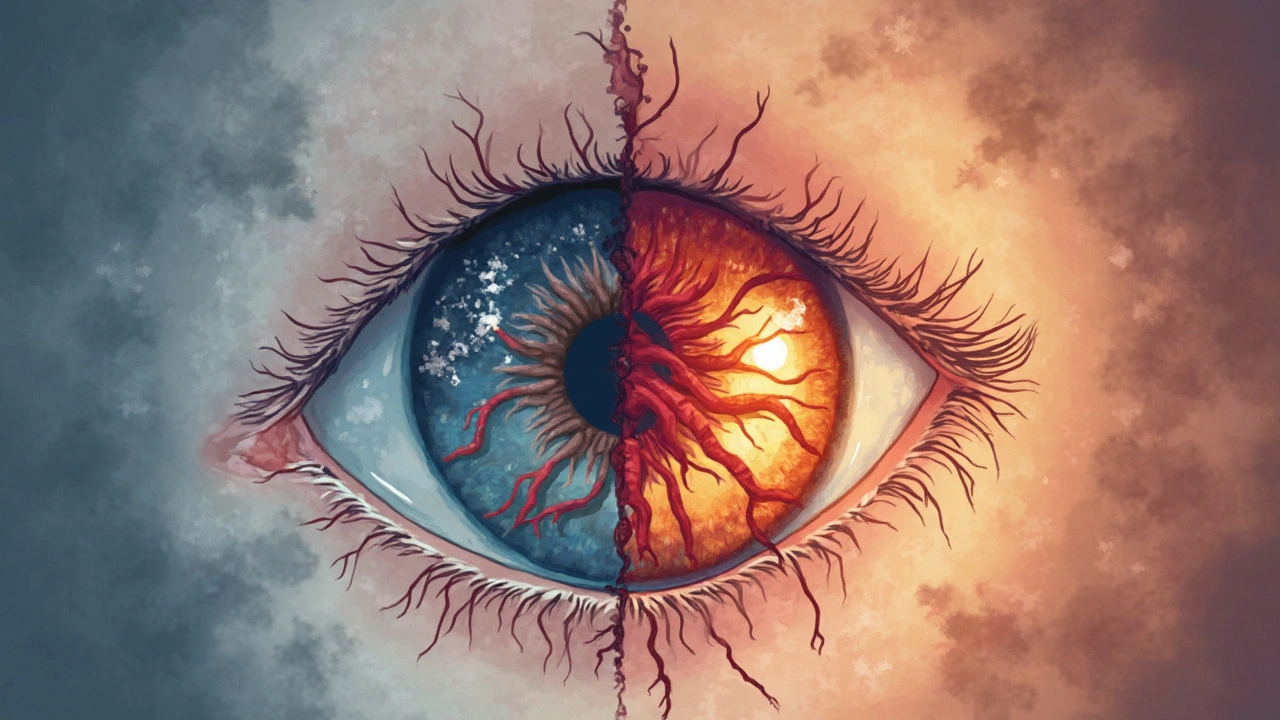Ocular Hypertension: what it means for your eyes
Ocular hypertension means your eye pressure (intraocular pressure or IOP) is higher than normal but there’s no obvious damage to the optic nerve or vision loss yet. Higher pressure doesn’t always turn into glaucoma, but it raises the risk. The good news: with regular checks and the right care you can often prevent problems.
Wondering how high is "high"? Clinically, many doctors flag IOP over 21 mmHg. That number isn’t the whole story — cornea thickness, family history, and other factors change the picture. That’s why your eye doctor looks at several things, not just one number.
How ocular hypertension is diagnosed
Diagnosis is simple but thorough. Expect these tests during an eye visit:
- Tonometry: measures the pressure inside your eye. The puff test or a quick probe gives a reading in mmHg.
- Pachymetry: measures central corneal thickness. Thin corneas can hide true high pressure; thick corneas can make pressure look higher than it is.
- Optic nerve exam: your doctor inspects the optic nerve for signs of damage.
- Visual field test: checks for early vision loss that you might not notice yet.
Your doctor combines these results with risk factors like age, family history of glaucoma, race (some groups have higher risk), nearsightedness, and steroid use. If you take steroid eye drops or pills, mention that — steroids often raise IOP.
Treatment and monitoring — what to expect
Not everyone with ocular hypertension needs medicine right away. Many people are monitored closely. How often you’re seen depends on your pressure level, exam findings, and risk profile. If treatment starts, options include:
- Eye drops: first-line choices are prostaglandin analogs, beta-blockers, alpha agonists, or carbonic anhydrase inhibitors. Drops lower pressure and are used daily.
- Laser trabeculoplasty: a clinic procedure that can lower pressure for months or years.
- Surgery: usually reserved for resistant cases or when glaucoma develops.
Follow-up is key. Typical schedule: every few months at first, then every 6–12 months if stable. Bring a list of all meds and mention headaches, vision changes, or side effects from drops.
Small lifestyle steps help, too. Exercise regularly, avoid smoking, eat a balanced diet, and be careful with over-the-counter steroid ointments or long-term steroid pills. If you have sudden vision changes, severe eye pain, or nausea with vision loss, seek emergency care.
Most people with ocular hypertension never lose vision, but it’s a condition that deserves attention. Keep your appointments, know your numbers, and ask your eye doctor what level of risk applies to you. Early action gives you the best shot at keeping healthy vision for life.
Smoking's Impact on Ocular Hypertension and Eye Health
Smoking isn't just a threat to your lungs; it's a sneak attack on your eyes too. By wreaking havoc on blood vessels, smoking can lead to increased pressure inside the eyes, known as ocular hypertension, and that’s a major risk for glaucoma. Apart from clouding your vision, it can cause downright dangerous conditions like cataracts and macular degeneration. But don't worry, this article will help you navigate these smoky waters with some practical advice.

